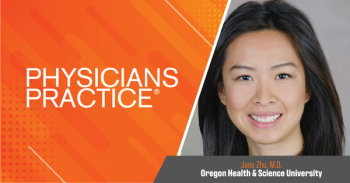
Optimizing Your EHR for ACO Success
You’ve invested in an EHR. Now it's time to optimize it for ACO success.
We’ve seen a tremendous increase in adoption of the EHR among small- and-medium-sized practices - but that’s not yet translating into ACO success at practices of this size, said Farzad Mostashari, former U.S. National Coordinator of Health Information Technology and current CEO of Aledade, an accountable care organization (ACO) services company. Success for small-to-medium-sized practices lies in truly optimizing their EHR, he said.
For example, creating templates for particular visit types for use within the EHR is really important - especially for practices involved in a population health initiative, such as an ACO, said Mostashari. “You want to be able to efficiently do wellness visits and transition-of-care visits. That’s key within an ACO. It’s not enough to wait until patients are sick, you need to be able to reach out to them while they’re not sick.”
He pointed to decision support capabilities within the EHR as worthy of consideration by any practice. With these tools, physicians can be notified within the EHR that a patient’s blood pressure is too high and that they may need to change their patient’s medications as a result.
“Decision support isn’t just about checking a box,” he said. “If we actually want to keep people healthy, we need this level of support within the EHR - whether it’s for preventing heart attacks or strokes or ensuring that patients get their flu shots.”
Communicating effectively with patients also requires significant use of your patient portal, according to Mostashari. “You have to be able to reach out to your patients and send them messages to let them know that you haven’t seen [them] in six months and they need to come on in for an appointment. Practices need to be able to follow up on the patients that are at the greatest risk and schedule appointments with them.”
The EHR is the best place to store information about how a patient would like to receive communications from the practice - whether that’s done by phone or by e-mail or by mail, he said. Also, taking the time to find out how patients want to be contacted is a good way to improve patient engagement.
Optimizing the practice’s EHR really makes sense from a financial point of view. “You can’t ask practices to go broke to do the right thing. [Practices] have to find a new way to do business with these alternative [payment models],” said Mostashari. “Part of the challenge over the next two years is that practices will be the need to figure out how to manage downsize risk within the ACO business model and one of the best ways to keep an eye on the practice is through EHR optimization.”
Over the coming years, practices will really need to excel in terms of value-based care, he said. “You’ll need to demonstrate that you’re delivering high-quality care so that plans will want you in their network-and that you deserve that increase of 5 percent because of your quality scores.”
Newsletter
Optimize your practice with the Physicians Practice newsletter, offering management pearls, leadership tips, and business strategies tailored for practice administrators and physicians of any specialty.








